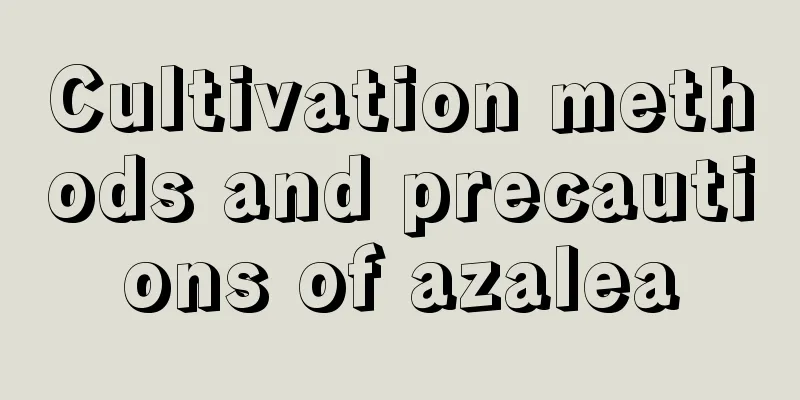Cultivation methods and precautions of azalea

1. SoilRhododendrons prefer loose, fertile, slightly acidic soil with good drainage and air permeability. It does not like heavy, alkaline soil. Therefore, we can mix leaf mold, peat soil and sand in a ratio of five to two to three as the soil for growing it. Before planting or transplanting, you can add a small amount of bone meal to the soil to increase the mineral content in the soil. 2. TemperatureThe most suitable temperature for azalea growth is 15-25℃. Try to let it grow within this temperature range in spring or autumn. When the temperature is relatively high in summer, you should pay attention to temperature control, the maximum should not exceed 32℃. When the temperature is relatively low in winter, you should move it indoors in time and keep the temperature above 5℃. 3. WateringWatering azalea is a technical job. If you water it too much, its roots will easily rot, and if you water it too little, its leaves will dry out. Generally speaking, we only need to keep the potting soil moist in early spring. In late spring and early summer, when it is ready to bloom, its water needs will increase greatly, so you need to water it a little more. In summer, when the temperature is too high, in addition to watering, you should also spray some water on the plants. In autumn, when the weather turns cooler, you need to control the water moderately and let the soil in the pot become slightly dry. After it goes dormant in winter, you should reduce watering. IV. Precautions1. Pruning. Rhododendrons grow relatively fast and can easily become very dense, which can result in many of the inner branches and leaves not seeing light and being unable to grow healthily. Therefore, it is necessary to trim it in time, which will not only make it look better, but also make it healthier. 2. Change the pot. The growth of azalea requires the consumption of nutrients in the soil. After one or two years, all the nutrients in the soil will be absorbed by it. At this time, you need to replace it with new soil rich in nutrient content so that it can continue to grow healthily. |
<<: Camellia cultivation methods and precautions
>>: Cultivation methods and precautions of Tiger Pilan
Recommend
How to transplant succulents
1. Preparation 1. Flower pot: First, prepare a ne...
The breeding methods and precautions of Huang Weng
How to breed yellow worm soil To plant yellow ama...
How to breed blue snowflakes
1. Seed propagation 1. Preparation for sowing: Bl...
How to grow a magic plant so that it will bloom to its full potential?
The succulent plant is upright and tall, with lus...
How to grow goldfish flowers to make them more vigorous?
The goldfish plant is known for its elegant shape...
What to do about crabapple leaf rust? What's wrong with dry leaves?
1. What to do about leaf rust Rust disease is mor...
Should the black stem of the peace tree be cut off?
1. Side branches can be pruned If the side branch...
The language and legend of tobacco
The flower language of tobacco Flower language: I...
Are violets poisonous?
1. Is it toxic? The answer is of course no. The f...
How to propagate Dendrobium chrysotoxum
1. Division propagation When propagating in this ...
Is it good to use cold boiled water to water flowers? Cold boiled water can be used to grow flowers and plants
Benefits of watering flowers with cold boiled wat...
How to cultivate tree purslane flowers
Growing Conditions of Tree Purslane Flowers Tree ...
What are the factors that affect the flowering of crape myrtle?
Reason 1: No shaping and pruning during the growt...
How to water potted Oncidium
Key points for watering potted Oncidium Oncidium ...
When does Michelia bloom?
When does it bloom? The petals of Michelia are li...









